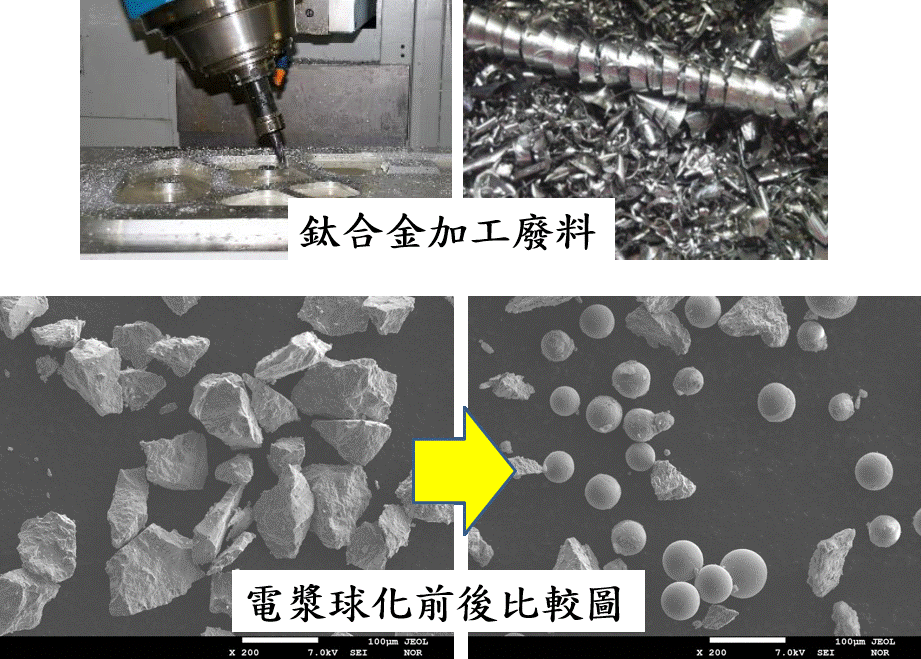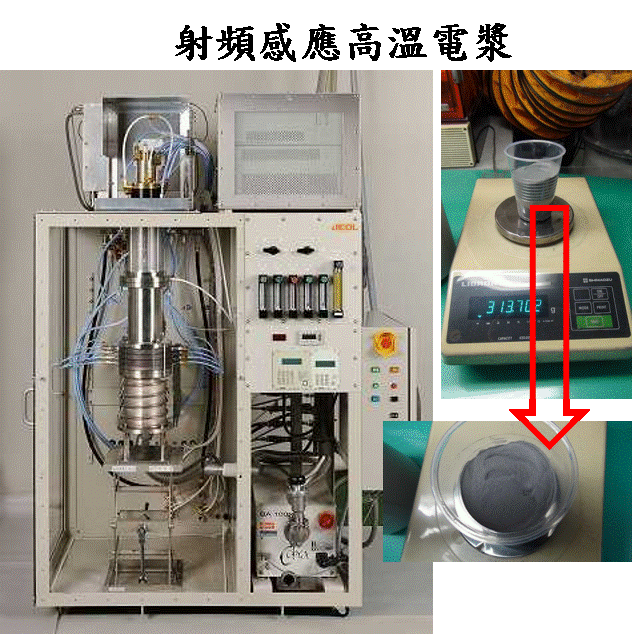| Technical Name | High value powder from titanium chips remanufacture | ||
|---|---|---|---|
| Project Operator | National Kaohsiung University of Science & Technology | ||
| Project Host | 蔡孟修 | ||
| Summary | Irregularly shaped scraps (flakes, fine needles, size >100 μm) are ground to the required particle size by grinding, and then the spheroidized using Radio Frequency Plasma technology. The center temperature of the plasma arc is above 18,000 K. Through the edge feeding method, only the surface of the refined waste particles is quickly melted. Under the effect of surface tension, the powder is rapidly quenched and the particles shrink and spheroidize (sphericity ≥95, sphericity) ≥98), forming a dense spherical powder (30-100 μm), after spheroidization, the fluidity is greatly increased, and it can be used for electron beam lamination manufacturing (EBM, particle size 45-105 μm)) and selective laser Melting (SLM, particle size 25-40 μm) is used in porous medical materials, exchangers, fuel nozzles, etc. Compared with the traditional process, it has the advantages on no pore defects, cost advantages (only 10%), and a controllable particle size range. |
||
| Scientific Breakthrough | Conventional titanium powder production using gas atomization (Gas atomization). The powder will have defects such as gas pores and satellite, which will cause poor fatigue properties of additive manufactured parts and affect the powder flowability. The ball milling and Radio Frequency Plasma spheroidizing processes are used on titanium chips remanufactured. There is no gas introduction in the process, which will not cause gas pores. Furthermore, the phenomenon of satellite points caused by the attachment of small particles to large particles can be eliminated by ball milling. At the same time the cost has a competitive advantage. |
||
| Industrial Applicability | Additive manufacturing is the trend of future manufacturing, with the advantages of manufacturing complex shapes and eliminating post-processing. However, its raw material source is metal powder, but because of the complicated manufacturing, it increases the manufacturing cost of the laminate. If the metal powder can be produced on its own, it will enhance the domestic manufacturing energy and provide powder manufacturers with another market competitiveness. This work is estimated to recover 30 tons/year of chips titanium, and can provide about 17 tons/year of metal powder, with an output value of about 1 million US dollars. |
||
| Keyword | Titanium alloy chip Radio Frequency Plasma Spheroidization additive manufacturing | ||
- tmh@nkust.edu.tw
other people also saw







